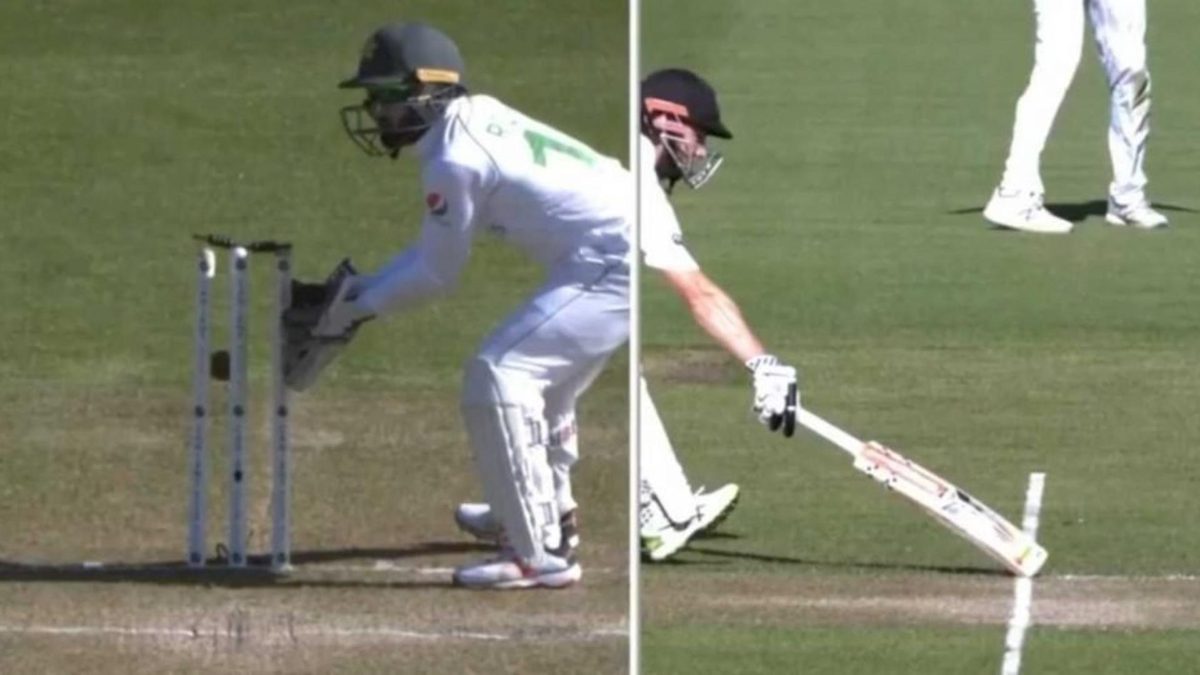
New Zealand skipper Kane Williamson survived a close run-out call during the ongoing Christchurch Test against Pakistan.
The incident occurred in the 75th over of the New Zealand innings during the unbeaten 215-run stand between the centurion Williamson and Henry Nicholls. Nicholls went for a sweep against the left-arm spin of Zafar Gohar and the batsmen set off for a quick single. The square-leg fielder fired a direct hit at the striker’s end and that, in real time appeared to be the end of Williamson.
But replays indicated that only one end of the bail popped up immediately on impact – at this point, Williamson had his bat on the line. By the time the other end of the bail popped out of its groove, the bat had crossed the crease, leading the decision to go in the batsman’s favour.
ESPNcricinfo‘s ball-by-ball commentary read:
“Over 74.4 Zafar to Nicholls, 1 run
“Direct hit at Williamson’s end. This is close. He might be gone. A tossed up ball outside off is swept strongly towards square leg. It’s hit so hard that the possibility of a single becomes quite risky but Nicholls wants it. And in the end, a quirk of cricket saves Kane. Only one end of the bail pops up immediately on impact, the other one takes a while, and in that split second, Williamson makes it. Remember, both edges of the bail need to be out of the groove with the batsman still out of his crease for him to be dismissed.”
Third umpire Wayne Knights was heard on air saying, “I’ve got one end of the bail up, the other end of the bail is not dislodged. I’m ready to make my decision (Not-Out).”
As per the law, both edges of the bail need to be dislodged, with the batsman short of his crease for him to be adjudged run out. Law 29.1.1.5 states:
“The wicket is put down if a bail is completely removed from the top of the stumps, or a stump is struck out of the ground, by a fielder with his/her hand or arm, providing that the ball is held in the hand or hands so used, or in the hand of the arm so used.”
The incident does highlight a consistency within the laws, and in the conditions that arise with the use of modern-day zing bails technology. When LED wickets are in use, the zing bails are usually seen to light up when either edge of the bail is disturbed, and at times, even before it’s completely dislodged. Despite the manufacturers claiming that the bails light up when they are completely out of the groove, there have been numerous instances when it happens for a fraction of second, with the bails staying in tact to work in favour of the batsman.
As per the playing conditions, for run outs without LED wickets: Playing condition 29.1.1 states that, “The wicket is put down if a bail is completely removed from the top of the stumps.”
When LED wickets are in use, “the moment at which the wicket has been put down shall be deemed to be the first frame in which the LED lights are illuminated and subsequent frames show the bail permanently removed from the top of the stumps.”
Nasser Hussain makes a valid point at the end of the clip below.
AND THIS IS STH THAT THE NAKED EYE CAN DISAPPROVE pic.twitter.com/4bSd9ZKpL8
— tushar mathur (@tushmath) March 2, 2017
In Williamson’s case, without the use of zing bails the third umpire trusted his eye and with the replays shown and the laws in place, there could be little argument against the decision made. However, with LED bails in use, the decision could easily have gone the other way.








